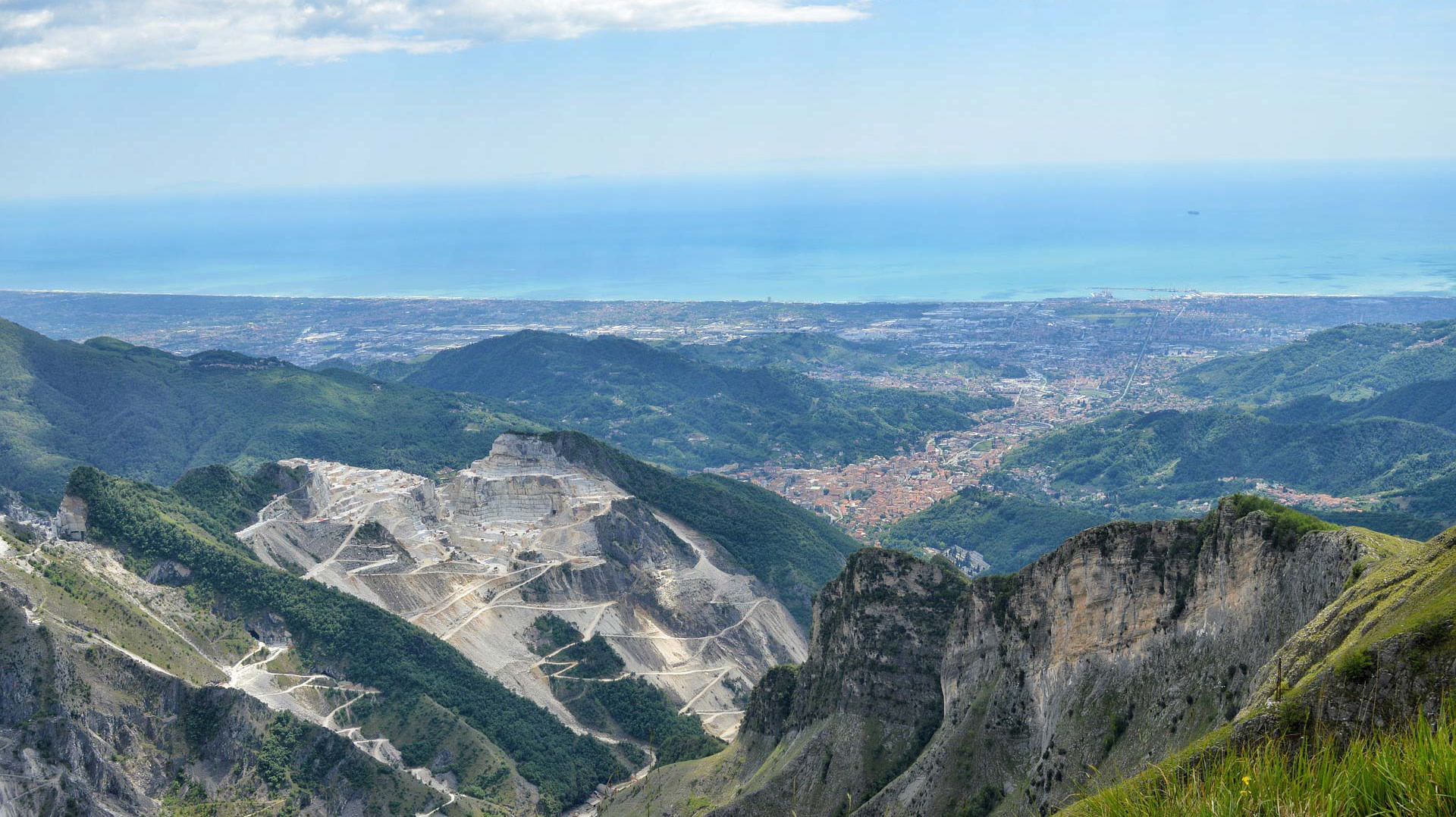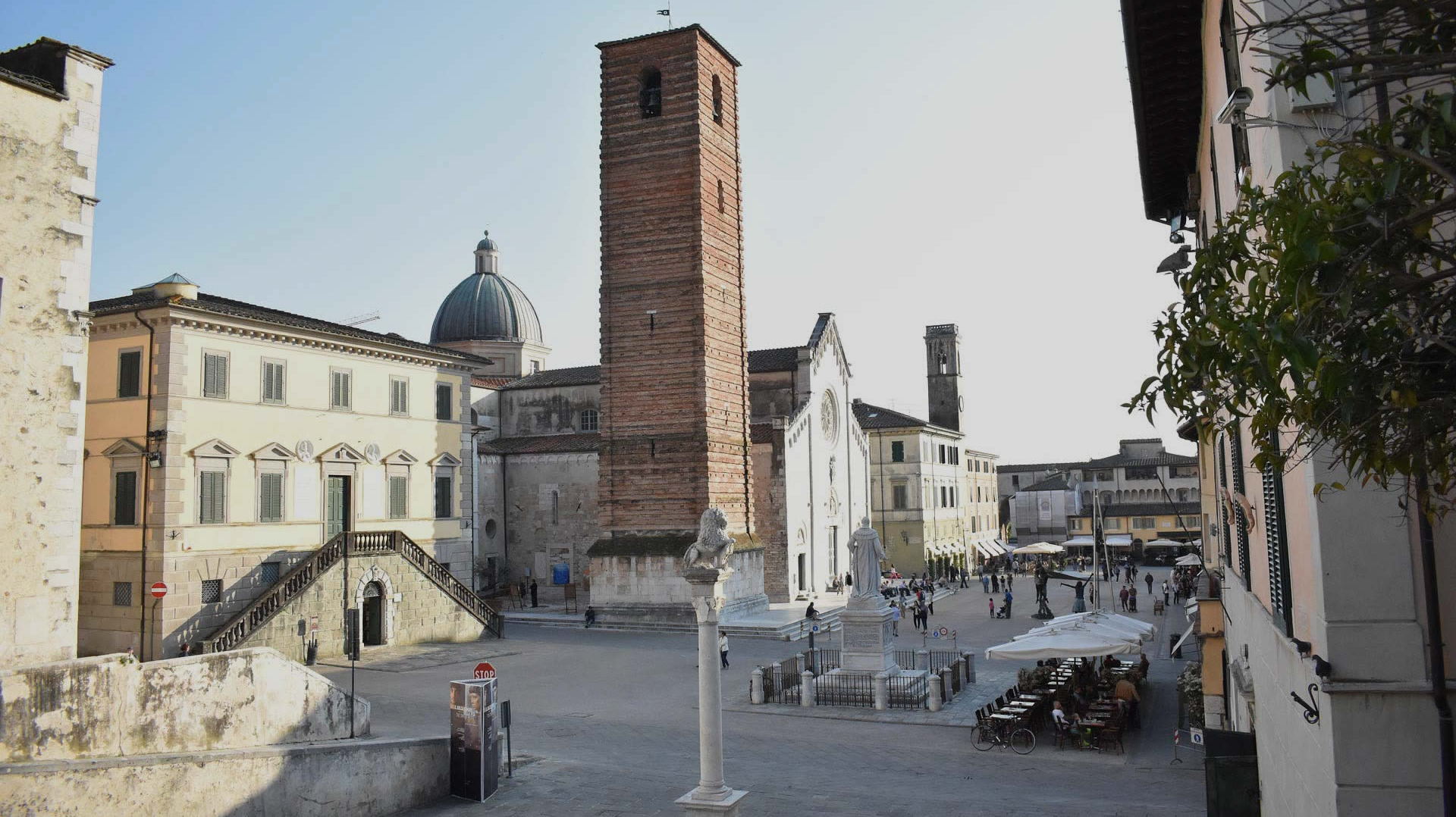
«Aronta è quel ch'al ventre li s'atterga,
che ne' monti di Luni, dove ronca
lo Carrarese che di sotto alberga,
ebbe tra ' bianchi marmi la spelonca
per sua dimora; onde a guardar le stelle
e 'l mar non li era la veduta tronca.»
Dante Alighieri, Inferno,Canto XX, versi 46-51
Carrara, whose name derives from the Celtic “stone” hence from the mountains above, the Apuan Alps precisely, or from “caraia”, which means cave: the famous Apuan Alps’ marble caves of Carrara. It belongs to the ancient territory of Luni and stretches from the coast, with Marina di Carrara, to the Apuan Alps at whose foot the hills host characteristic mountain centres. This town is surrounded by three important marble basins: Ravaccione, Fantiscritti and Colonnata. The latter bears the name from the homonymous locality that is renowned for its lard production: lard that is seasoned inside Carrara’s marble basins. Carrara is famous all over the world thanks to its precious white marble, the finest one, extracted right from the Apuan Alps’ chain and is the most important centre, at a national and international level, of marble extraction and processing. Besides, from this characteristic mountain retreat you can admire the spectacular Monte Sagro marble caves. Along the coast there are wide and white sandy beachesand Marina of Carrara is an ideal destination for young people, assiduous visitors to popular nightclubs. Finally, Carrara deserved its medal for civil value for having distinguished itself in the liberation struggle from the nazi-fascism. Infact this town lied right in the middle of the “Gothic Line” which was erected in Luni. The MUST SEE LIST includes: the “town’s Duomo” in romanic-gothic style, the Castle, home to the Fine Arts Academy, “the Duomo Square” with its medieval palaces, among which the house where Michelangelo Buonarroti lived, the museum site of Saint Francesco church, Saint “Ceccardo church ad Aquas”, Garibaldi Square with the “Animosi Theatre”, Emanuele Repetti’s house where Petrarca lived, “Palazzo del Medico” by the Carrara’s architect Alessandro Bergamini, the 1892 Politeama Theatre, “Villa Fabbricotti alla Padula”, Palazzo Walton, Palazzo Cybo Malaspina in medieval and renaissance style and the monument to Maria Beatrice d’Este by the sculptor Pietro Fontana (NO VIRGOLA) in the middle of “Alberica Square”.
